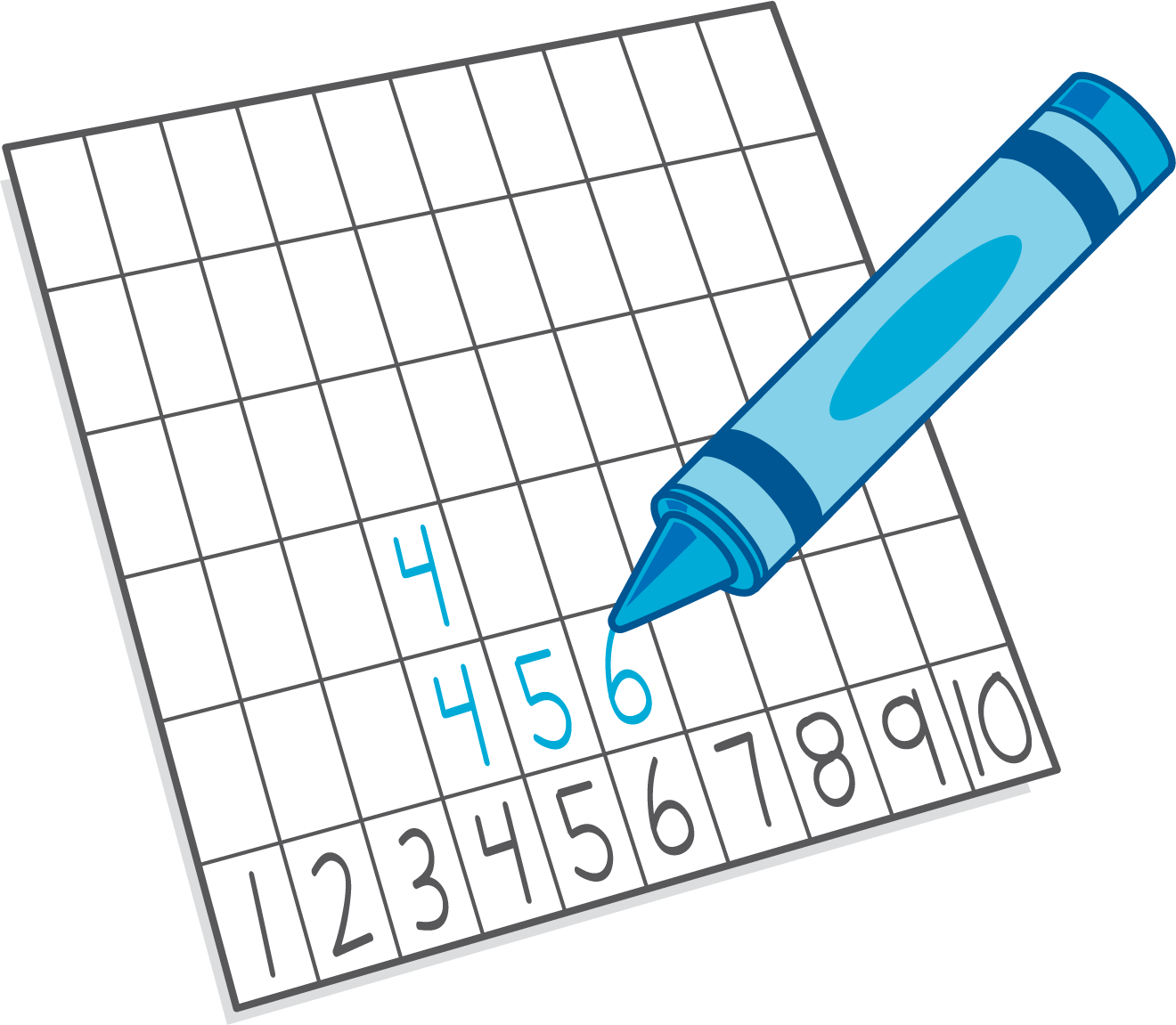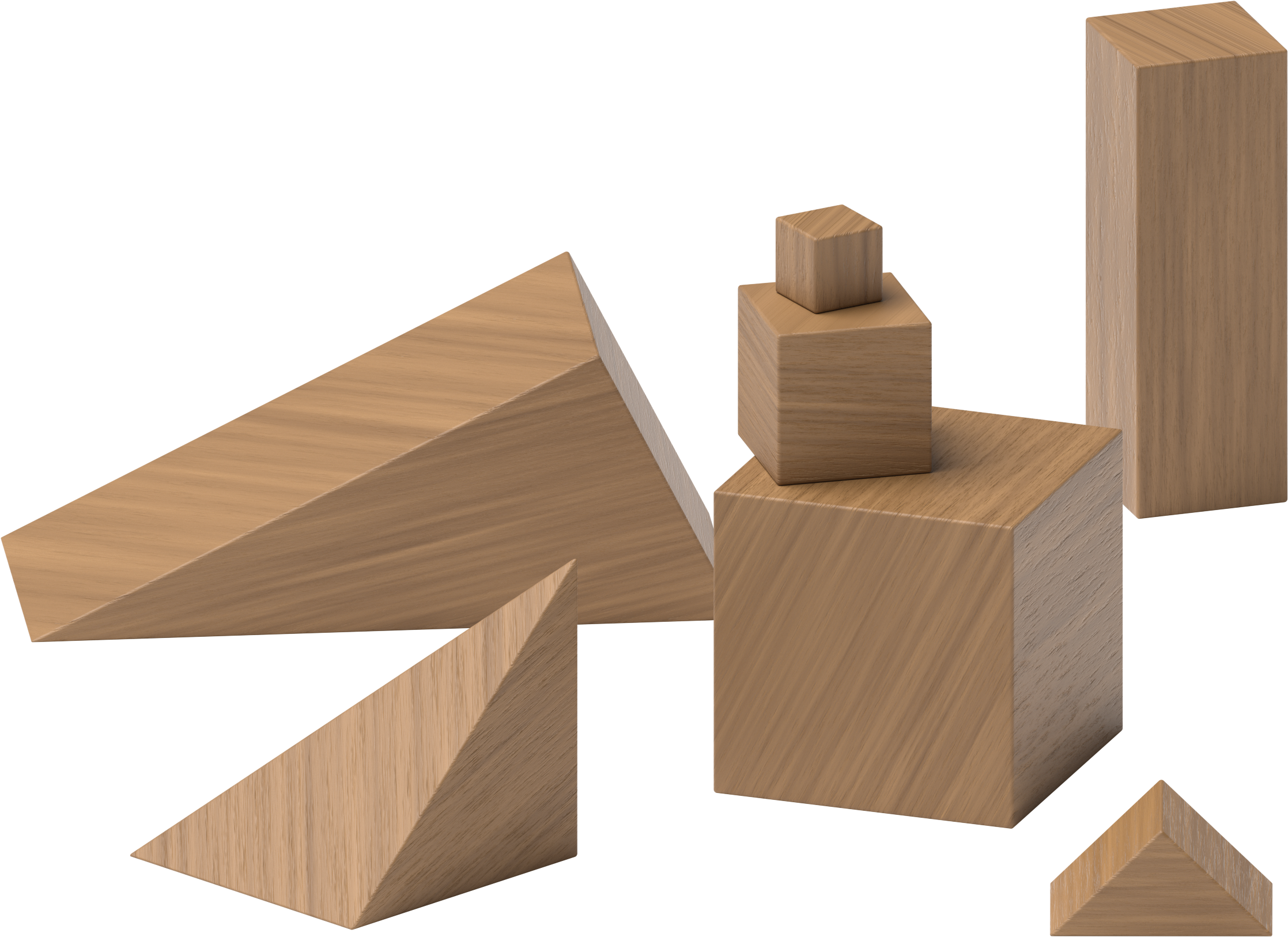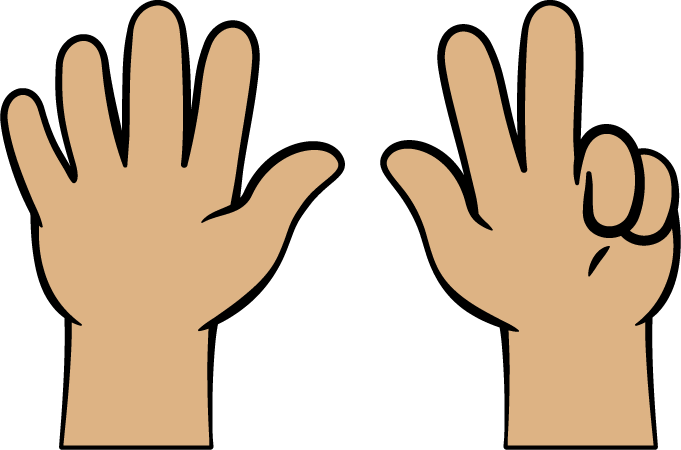Lesson 16
Write Numbers to Represent Quantities
Warm-up: How Many Do You See: One More with a 5-frame (10 minutes)
Narrative
The purpose of this How Many Do You See is for students to subitize or use grouping strategies to describe the images they see. Recognizing and describing one more than a given quantity will be useful in the next section when students work on creating and identifying one more than a given quantity or number.
When students use the structure of the 5-frame to recognize and describe quantities, they look for and make use of structure (MP7).
Launch
- Groups of 2
- “How many do you see? How do you see them?”
- Flash image.
- 30 seconds: quiet think time
Activity
- Display image.
- “Discuss your thinking with your partner.”
- 1 minute: partner discussion
- Record responses.
Student Facing
How many do you see?
How do you see them?



Student Response
For access, consult one of our IM Certified Partners.
Activity Synthesis
- Display the images with 6 dots on a 5-frame and 7 dots on a 5-frame.
- “What changed from this group to this group?” (There was one more dot. There were 6 and now there are 7.)
Activity 1: Revisit Math Stories, How Many? (10 minutes)
Narrative
The purpose of this activity is for students to revisit stage 1 of the Math Stories center. In an earlier variation, students asked and answered “how many” questions about groups of images in different arrangements. In the activity, students represent how many images there are using drawings, numbers, or words. Using written numbers to represent how many images there are is highlighted in the activity synthesis.
Required Materials
Materials to Copy
- Math Stories Stage 1 and 4 Pictures
- Math Stories Stage 1 Recording Sheet
Launch
- Groups of 2
- Give each group of students picture cards. Give each student a recording sheet.
- “We are going to learn a new way to play Math Stories.”
- Display a picture card.
- “Think of one ‘how many’ question that you can ask your partner about this picture.”
- 30 seconds: quiet think time
- Share and record responses.
- “Take turns with your partner asking ‘how many’ questions about the picture. When your partner asks you a ‘how many’ question, show how many things there are on the recording sheet. Show your thinking using drawings, numbers, or words.”
Activity
- 5 minutes: partner work time
- Monitor for students who write a number in their representation.
Student Response
For access, consult one of our IM Certified Partners.
Advancing Student Thinking
If students count the images in the blackline master and do not create a written representation:
- “How many ____ are there?”
- “How can you show that there are __ things? Can you use drawings or numbers to show that there are ___ things?”
Activity Synthesis
- Invite students who wrote a number in their representation to share.
- “How many boats did they count? How do you know?” (They counted 5 boats. I know because they wrote the number 5.)
- “We can write numbers to show how many things we counted. If you haven’t already, write a number to show how many you counted.”
- “When you play Math Stories during centers, be sure to write a number to show how many things you counted. You can also use drawings or words."
Activity 2: Label Mystery Bags (15 minutes)
Narrative
The purpose of this activity is to represent quantities of 1-10 objects using a number. Students practice counting groups of 1-10 objects and recognizing and writing numbers. In the activity synthesis, students determine how many objects are in a bag based on the number label, which encourages them to connect numbers to quantities (MP2). Students develop their understanding that the arrangement of objects does not affect the quantity.
Any small classroom materials can be used to fill the mystery bags, such as buttons, connecting cubes, or pencils. Collections that students bring from home can also be used.
Advances: Speaking, Conversing
Supports accessibility for: Social-Emotional Functioning
Required Materials
Materials to Gather
Required Preparation
- Each student needs a brown paper (not see through) bag with 1 to 10 objects inside.
Launch
- Groups of 4
- “Today we’re going to play a game called ‘Mystery Bags’. There are some objects inside each bag but we can’t see how many. We need to figure out how many objects are in the bag and then put a label on the bag so that the next group knows how many objects are inside.”
- Display a bag. Demonstrate taking each object out of the bag and counting the objects.
- “Which number should I write on my sticky note to show how many objects there are?”
- Demonstrate writing the number on the sticky note and placing it on the bag.
Activity
- Give each group of students 4 bags filled with 1-10 objects and sticky notes.
- “Work with your group to figure out how many objects are in each bag. Write a number on the sticky note to show how many objects are in each bag.”
- 5 minutes: small-group work time
- Each group trades their bags with another group.
- “Now you have another group’s bags. Look at their sticky notes and see if you can figure out how many objects are in the bag. Then check in the bag to see how many objects are really in the bag.”
- 5 minutes: small-group work time
Student Response
For access, consult one of our IM Certified Partners.
Activity Synthesis
- Display a bag containing 8 objects labelled with the number 8 for all to see.
- “How many objects do you think are in this bag? What makes you think that?” (I think there are 8 objects in the bag, because the number 8 is on the sticky note.)
- 30 seconds: quiet think time
- Share responses.
- “Let’s see if you were right.”
- Take the objects out of the bag and count them.
- “There were 8 objects in the bag. We could tell because the number 8 was written on the bag. Now I’m going to put the objects in a line. How many objects are there now?”
- Demonstrate moving the 8 objects into a line.
- “We still have 8 objects. I didn’t add any more objects or take any away, so there are still 8 objects.”
Activity 3: Centers: Choice Time (20 minutes)
Narrative
The purpose of this activity is for students to choose from activities that offer practice composing, decomposing, and comparing numbers.
Students choose from any stage of previously introduced centers.
- Math Stories
- Math Libs
- Bingo
- Number Race
- Geoblocks
- Math Fingers
Required Materials
Materials to Gather
Required Preparation
- Gather materials from:
- Math Stories, Stage 1
- Math Libs, Stage 1
- Bingo, Stages 1 and 2
- Number Race, Stage 1
- Geoblocks, Stages 1 and 2
- Math Fingers, Stages 1 and 2
Launch
- “Today we are going to choose from centers we have already learned.”
- Display the center choices in the student book.
- “Think about what you would like to do first.”
- 30 seconds: quiet think time
Activity
- Invite students to work at the center of their choice.
- 8 minutes: center work time
- “Choose what you would like to do next.”
- 8 minutes: center work time
Student Facing
Choose a center.
Math Stories

Math Libs

Bingo

Number Race

Geoblocks

Math Fingers

Activity Synthesis
- “What is one math question that your partner asked you during centers today?”
Lesson Synthesis
Lesson Synthesis
“Why are numbers helpful?” (They tell us how many. It is quicker to write a number than to draw a picture or take out objects.)
If needed, say: “We can write numbers to tell how many there are. Numbers help us communicate ‘how many’ easily.”
“Let’s practice counting to 20.”
Demonstrate counting to 20. Count to 20 as a class 1–2 times.
Cool-down: Unit 2, Section C Checkpoint (0 minutes)
Cool-Down
For access, consult one of our IM Certified Partners.
Student Section Summary
Student Facing
In this section, we matched numbers with groups of things.



We also counted out objects and drew pictures to show numbers.



We wrote numbers to show how many things there are.


